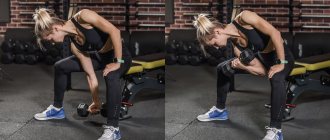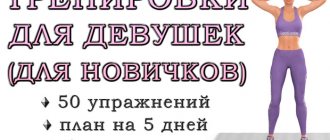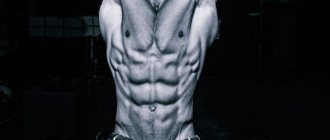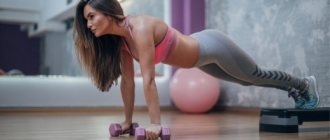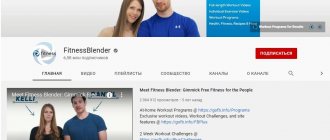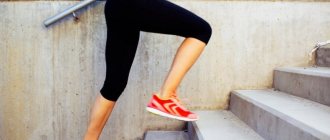As the classic said, “a young beautiful woman is a miracle of nature, a beautiful older woman is a miracle of art.” However, many young girls are unhappy with their figure. In this subjective perception a completely objective tendency is refracted. Many teenagers look clearly overfed; their figure clearly indicates an excess of domestic care and a lack of physical activity. And in adulthood, various family hardships also leave their cruel mark on the female figure. One of the problematic parts of the female body is the buttocks, or, in simple terms, the butt.
Everyone wants to have a beautiful butt. But sitting in the office every day, irregular meals with an excess of simple carbohydrates and stress that deprives us of vital energy do not leave our buttocks any chance of recognition from others.
But it’s worth streamlining your diet by slightly enriching your diet with fresh vegetables and fruits, reducing the amount of flour, sweet, smoked and fried foods, and increasing the share of protein foods (fish and lean meat, chicken breast and low-fat cottage cheese, beans, peas and nuts) - how the fat layer will inexorably, albeit slowly, decline, exposing knots of weak muscles and muscles tired of life. For many, it may be a revelation that when you lose weight, your figure may not improve, but completely deteriorate. And to prevent this from happening, you need to add some exercises to your schedule overloaded with daily worries to strengthen and increase the volume of certain muscles.
If you're losing weight, you're probably already doing cardiovascular exercise, such as running or biking, or going to the gym. And so today we will remember the most effective exercises for developing the gluteal muscles, in other words, we will talk about exercises for the butt.
Squats
This is the most effective exercise for the buttocks, both at home and in the gym. It puts the most stress on the legs, hips and buttocks. If you're worried that the squat exercise will "swing" your legs and make you look like a bodybuilder, relax. If this happens, it will not be very, very soon, and along the way you will notice an unwanted increase in the volume of your hips and can stop doing this exercise at any time. But in fact, if you do not additionally perform exercises to develop your legs, but instead exercise your buttocks, then in principle you will not face any danger. Moreover, you should understand that you cannot purposefully pump up one muscle while leaving all the others intact. Even if you try to do this, you can exercise to the point that the pumped muscle at a certain moment, having taken a large load, will tear the weak muscles associated with it, putting you in a hospital bed. So it's better to focus on exercises that develop several muscles.
Squats are an exercise for which there are many variations. If you have never played sports, try just squats first. And if you are a trained athlete, then use weights, for example, a barbell or dumbbells. When performing the exercise, try not to lift your heels off the floor and not to extend your knees beyond the line of your toes. Move the fifth point back as far as possible. At the bottom, your thighs should be approximately parallel to the floor, and your back should be inclined at an angle of 45 degrees. The wider you place your legs, the more load will be placed on the inner thigh muscles.
A set of exercises to strengthen the buttocks
You can do it at home. “In the initial stages, you can work with your own weight, but as you progress, it is advisable to perform exercises with weights - weights, dumbbells, expanders,” says Victoria Tyazhina.
How to build a lesson
- Start your workout with a short warm-up .
- Do the exercises consistently. “If you work without weights, you can do 20-30 repetitions of all movements (in each direction), advises Victoria Tyazhina. - With weights - 16 repetitions. Leave a minimum amount of rest between exercises.”
- Do this program 3-4 times a week .
- Finish your workout with stretching .
- Control technique . “Don’t hyperextend your lower back in glute bridges, just aim to activate your glutes. When you perform swings, actively work the muscles of your legs and shins. Any exercise requires complete concentration of attention on the quality of movement,” adds Victoria Tyazhina.
To perform the complex, you will need a mat, a cabinet (chair or bench), and weights (optional).
Lifting the pelvis while resting on a chair
1-pelvic lift
Place a chair next to the mat. Lie on your back, lift your legs up, bend your knees and place your feet flat on a chair (or bench). Lean on the floor with your back in the area of the shoulder blades, shoulders and palms. Smoothly lift your pelvis up, actively working your buttock muscles. Maintain a natural arch in your lower back without hyperextending it. Then slowly lower yourself to the starting position. This is one repetition. Perform 16 repetitions of the exercise.
Glute bridge from a chair with leg raises
2-gluteal bridge
Sit on the floor with your back resting on a chair or bench. Bend your right knee and place your foot on the floor. Extend your left leg forward. Place your hands behind your head. Raise your pelvis up until it is parallel to the floor, resting on your shoulder blades and right foot. At the same time, lift your left leg up. Actively work the muscles of the buttocks; the muscles of the thighs and abs will also be involved in the movement. Then slowly lower yourself to the starting position. This is one repetition. Do 16 of these in each direction.
Glute bridge on straight arms
3-glute bridge on straight arms
Sit on the floor with your legs straight, place your palms slightly behind your pelvis. Bend your knees, place your feet on the floor and, pushing off your palms and feet from the floor, lift your pelvis up. Actively work the muscles of your buttocks, abs and legs. Then gently lower your pelvis down (do not touch the floor). Watch the position of your lower back - maintain a natural arch. This is one repetition. Perform 16 repetitions of the exercise.
Hip extension on the floor
4-Hip Extension on the Floor
Get down on your knees, lean your body forward, place your palms under your shoulders, knees under your pelvis. Don't arch your lower back (keep it neutral). Distribute your body weight between three points of support, move your right leg back and up (your right foot should be pointing at the ceiling). Feel the work of the gluteal muscle. Then slowly lower your leg to the starting position (but do not touch the floor with your knee). This is one repetition. Do 16 of these in each direction.
Swing a straight leg on your knees
5-straight leg swings
Get down on your knees, lean your body forward, place your palms under your shoulders, knees under your pelvis. Don't arch your lower back (keep it neutral). Take your right leg back (extend it), pointing your toe away from you. Lift it up, keeping your knee straight, then lower it down (without your toe touching the floor). This is one repetition. Do 16 of these in each direction. Actively work your buttock muscles without overloading your lower back.
Swing your leg up diagonally
6 swings diagonally
Get down on your knees, lean your body forward, place your palms under your shoulders, knees under your pelvis. Don't arch your lower back (keep it neutral). Move your right leg back and to the right, pulling your toe away from you. Swing diagonally to the left (as if describing an arc with your foot), then return to the starting position. Actively work the muscles of your buttocks and thighs. This is one repetition. Do 16 of these in each direction.
Taking the leg to the side from the knees
7-leg abduction to the side from the knees
Get down on your knees, lean your body forward, place your palms under your shoulders, knees under your pelvis. Don't arch your lower back (keep it neutral). Without straightening your right knee, move it to the side (raising your thigh as high as possible). Then return to the starting position. This is one repetition. Do 16 of these in each direction.
Crab steps
2.8
Stand straight, feet shoulder-width apart. Bend your knees slightly, move your pelvis back, feel the work of the gluteal muscle. Bring your hands together in front of your chest. Take 4-5 steps to the right, maintaining the position of your pelvis and body. Then walk the same amount to the left. This is one repetition, do 5 of these. Watch the position of your lower back (do not increase the deflection or its rounding), do not slouch.
Follow this program, gradually increasing the load - add weights or the number of repetitions of exercises.
The editors would like to express their gratitude to the Spirit club for their assistance in organizing and conducting the shooting . Fitness on Voykovskaya.
Swing your legs back
This wonderful exercise is not only effective, it has a number of other advantages: it can be performed anywhere and with any level of training, it has a lot of variations that allow you to load different muscle groups, and you do not need any equipment to perform this exercise.
It can be done standing, or you can do it on all fours. In this version, the exercise loads the gluteus maximus muscle and the muscles of the back of the thigh. Swinging to the side engages the gluteus medius muscle.
As an option, you can do upward swings - standing face down, leaning on your hands and one leg, raise the second leg bent at the knee as high as possible.
Another option is a rainbow. It is done almost the same as swinging on all fours, only a slight deviation to the sides is added: the foot of the working leg describes a rainbow.
Passive and active rehabilitation after stroke
The first classes with the patient are conducted by a physical therapy instructor in the ward. The patient performs simple movements with his arms and legs with the help of an instructor - this type of rehabilitation is called passive. Passive rehabilitation of the upper and lower extremities begins with the development of large joints with a gradual transition to small joints. Rehabilitation therapy begins with the shoulder and hip joints. After developing the hip joint, the instructor helps the patient flex and extend the lower limb, develops the knee, then the ankle joint, and lastly the doctor develops the joints of the foot.
The rehabilitation specialist performs massage from the foot to the thigh. During hand rehabilitation, exercises begin with the development of the shoulder joint, then flexion-extension and rotational movements of the hands are carried out in the area of the elbow and hand joints. Massage of the upper limbs is performed from the fingers to the shoulder. A set of exercises combined with massage stimulates brain function. With partial restoration of motor function, exercise therapy exercises become more complex, and the patient begins to perform the exercises independently. The time for gymnastics increases from 10 minutes to half an hour, and active rehabilitation of the patient begins.
If the brain damage is significant, the patient is paralyzed, sensitivity is lost, rehabilitation is carried out with the help of medication, massage, electromagnetic stimulation of nerve cells, acupuncture, and reflexology. After partial restoration of motor function, the rehabilitation doctor introduces therapeutic exercises into the program.
One leg bridge
A very effective exercise. Lying on your back with your knees bent, straighten one leg and, keeping it straight, lift your pelvis so that your body is extended in a straight line. Rise up and down several times, trying not to touch the floor with your straight leg and buttocks. The exercise is done several times on each leg.
The influence of exercise therapy on the patient’s nervous system
Therapeutic exercise is the performance of certain physical exercises, which begin with the simplest movements of the patient after he regains consciousness, then the physical activity gradually increases, the exercises become more complex. Exercise therapy helps improve blood circulation in organs and tissues, accelerates the process of restoration of various body functions, and improves metabolism. Physical therapy exercises for each patient are selected individually depending on the severity of the patient’s condition and concomitant diseases. An individual physical therapy program at the Yusupov Hospital is drawn up by a rehabilitation doctor.
Make an appointment
Swing
Standing straight, bend one leg at the knee, then lean forward to touch your toes to the floor while moving your bent leg back. Then stand up straight. Try to keep the bent leg in the same position relative to the spine. Perform for 40-60 seconds on each leg.
There are many other useful exercises. If you want, you can easily find dozens of them. But the main principle of improving your figure is “do something.” Do exercises regularly and don't limit yourself to just one exercise. Do two, three, four... It’s best to exercise two or three times a week, properly loading your buttocks. And in general, try to strain them more often, especially if you have to do sedentary work.
Rehabilitation exercises on simulators
The Yusupov Hospital uses two types of simulators for the rehabilitation of patients after a stroke - mechanical and robotic. Mechanical exercise machines include exercise bikes, treadmills, and exercise machines for restoring balance and gait. Robotic simulators are equipped with electronic biosensors that stimulate activity by influencing the affected limbs. Robotic simulators have wide functionality; they are programmed taking into account the patient’s needs, promote the transmission of nerve impulses from the brain to the injured limb, and stimulate motor activity.
Rehabilitation exercises after a stroke are performed using multifunctional exercise equipment and sports equipment. There are different types of simulators:
- To restore motor activity, use a flexion/extension simulator, a simulator for developing the joints of the limbs, exercise tracks, and exercise bikes.
- For bedridden patients, exercise equipment in the form of a bed or bicycle is used.
- To restore balance, gait, and motor activity, a horizontal simulator is used.
- For patients who cannot yet stand, a seated exercise machine has been created to develop and strengthen the back muscles.
What do you need to train at home?
Ideally, you need to have the following shells:
- dumbbells with the ability to add weight - for effectively performing a number of isolating and basic exercises;
- barbell - to be able to perform classic basics at home (press press, deadlift);
- sports bench with adjustable backrest tilt;
- a set of elastic expanders (fitness bands) – for pumping up the legs and hips.
Beginners who are just starting to play sports can do without additional equipment. In fact, lifting heavy weights is no guarantee of success. For harmonious muscle development, 4 rules are enough:
- perform bases with your own weight;
- add aerobic exercise;
- adhere to proper nutrition;
- follow the daily routine.
With the right approach, you can create an effective training program that does not require any additional equipment.
Restoring fine motor skills after stroke
Fine motor skills are restored with the help of simple exercises that allow you to restore fine hand movements and finger flexibility. The most effective activities for restoring fine motor skills are putting together puzzles, various objects from small parts of a construction set, drawing, fastening buttons on clothes, and lacing shoes. To restore the function of the hand and fingers, the patient is asked to take two nuts in his hand and roll them with the movement of the palm and fingers. Recommended for patients after a stroke to develop fine motor skills:
- Sort through the beans and peas, separating the peas from the beans.
- Use special silicone hand trainers with spikes to massage your palms and fingers.
- Tighten and unscrew nuts, close and open the lock with a key, turn on and off the lights in the room, write texts.
For the shoulder joint
Restoration of the forearm and shoulder joint takes place with the help of flexion and extension exercises, rotation, push-ups, muscle tension and relaxation, clapping, and massage. To do this, use exercise machines, dumbbells, and various devices. First, the arm is kneaded, then a set of exercises is performed; therapeutic exercises are always combined with a massage of the limbs. A set of exercises for the shoulder joint:
- The patient lies on his back, arms extended along the body. The instructor holds his hand at the elbow to avoid bending, takes the patient's palm with his other hand and moves the patient's arm up and down.
- The instructor performs circular movements with the patient's arm fixed in a straightened state.
- The patient lies on his back, with his arm slightly to the side. The instructor turns the straightened arm over, palm down, then up.
Restoring speech after a stroke
Speech function after a stroke is restored much worse than motor function. Its recovery can take a long time, over several years. Speech therapists at the Yusupov Hospital are developing a program and working with the patient to restore speech throughout the entire period of his stay in the hospital; after discharge from the hospital, his relatives are involved in the patient’s rehabilitation. To restore speech, the following techniques are used:
- Pronunciation of an incomplete word - the patient must complete the word independently.
- If speech function is completely lost, rehabilitation begins with the pronunciation of individual sounds.
- When the patient learns to pronounce words, he is forced to repeat short poems and sayings.
- Singing is considered one of the best methods of speech restoration.
- In order for the patient to learn to speak faster, the facial muscles and tongue muscles should be trained. For this purpose, the patient is taught to curl his lips into a tube, stick his tongue out of his mouth as far as possible, and lick his lips with his tongue, first in one direction, then in the other. Lightly bite your lower lip, then your upper lip, and bare your teeth.
Make an appointment
Is it possible to build muscle at home?
Partly yes: training without iron at home will help strengthen your muscles. However, you shouldn’t expect the same effect as from working out in the gym (that is, using a full range of fitness equipment): you won’t be able to significantly pump up at home . “Strength training at home has significantly fewer opportunities, so it is less effective,” says Ivan Ermolaev, personal trainer, X-Fit expert in Russia .
— You need to treat home workouts correctly: their main task is not to significantly increase muscle mass and not to take on new weights, but to maintain physical activity and the health of your body and joints, so that after returning to the gym you don’t have to start all over again. The most important thing in home workouts is regularity and moderation. This will allow us to get the most out of them.” However, this does not mean that you will have to give up your classes until the quarantine is completely lifted. “If you are a beginner, start with a walk (if possible) and morning exercises. If you previously worked out 2-3 times a week, then maintain this activity at least at the same level by adding morning exercises every day and bodyweight training three times a week. Remember that during quarantine it is important to maintain physical activity, while allowing the body to recover,” adds Ivan Ermolaev.
Maintain balance and avoid overload. “Self-isolation is not the time to significantly increase training loads. If you have never worked out before, then you should not go to all lengths, connect to all the live broadcasts of fitness trainers and indiscriminately repeat 3-4 workouts a day after them, says Ivan Ermolaev. “This will lead to poor health and overtraining.”
What is the difference between exercising with and without equipment? “Without iron, hormonal stress occurs less, and, accordingly, the strength and volume of muscle fibers also increases. Without iron, the main growth factors are absent: straining and the involvement of more motor units,” notes Sergey Kotov, master trainer at the Escalada fitness club.
Tips for beginners
The glute bridge exercise will serve as a good addition to the standard set of physical exercises for beginners. It can and should be performed at home, because it does not require any special training or special devices.
Beginners should take into account some features of the technique:
- The glute bridge gives the best results when done between regular squats and ab pumps. At this moment, the buttock muscles are maximally warmed up and ready to work.
- Make sure you support your legs, your feet should be on the floor, your legs shouldn’t be too wide apart, your pelvis shouldn’t hang loose. In order to bring the movement to automaticity, perform it slowly at first, monitoring your breathing and muscle tension.
- Do not make sudden movements, do not increase the load if you are not ready for it. Otherwise, you can injure your neck and spine.
